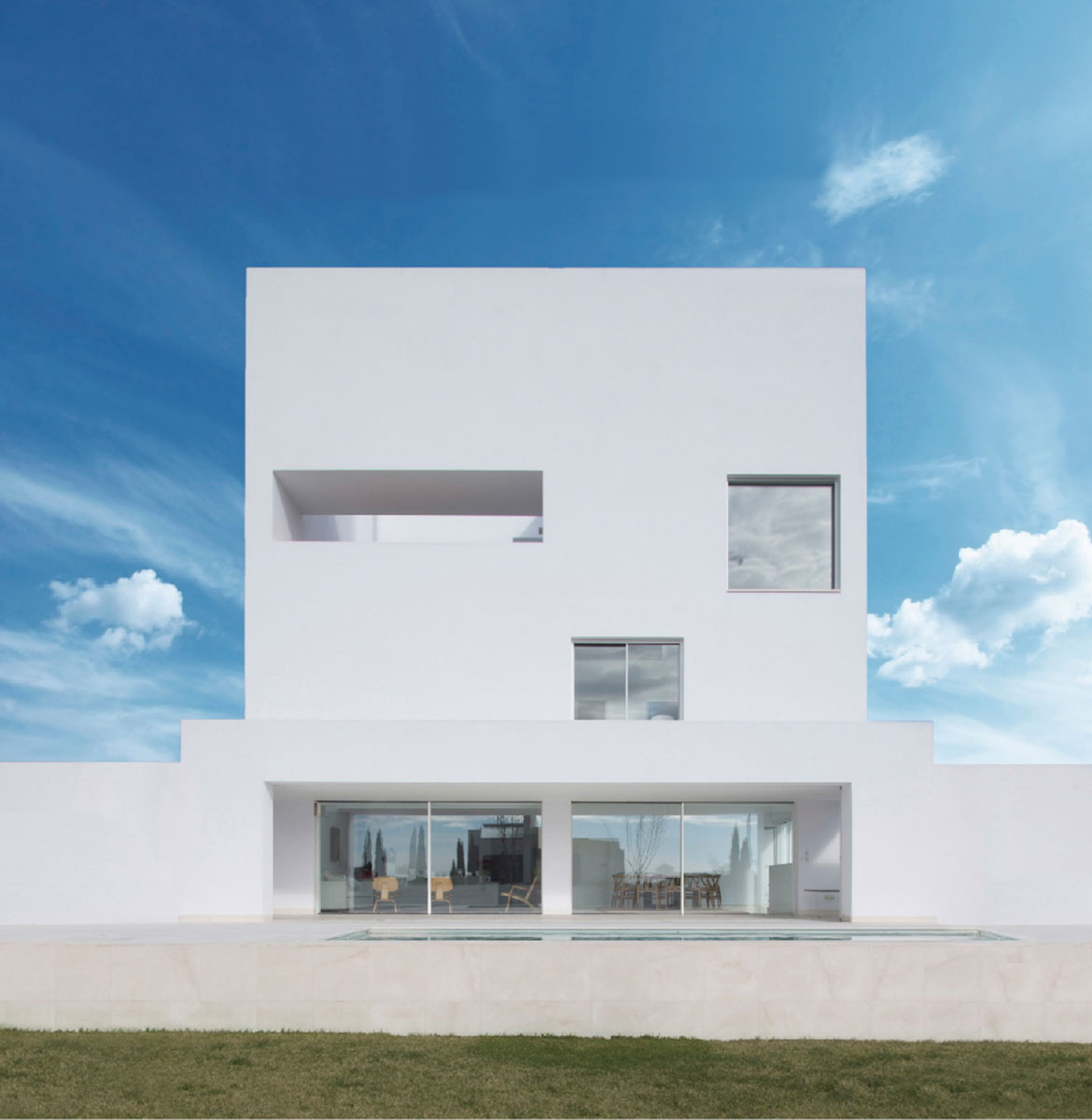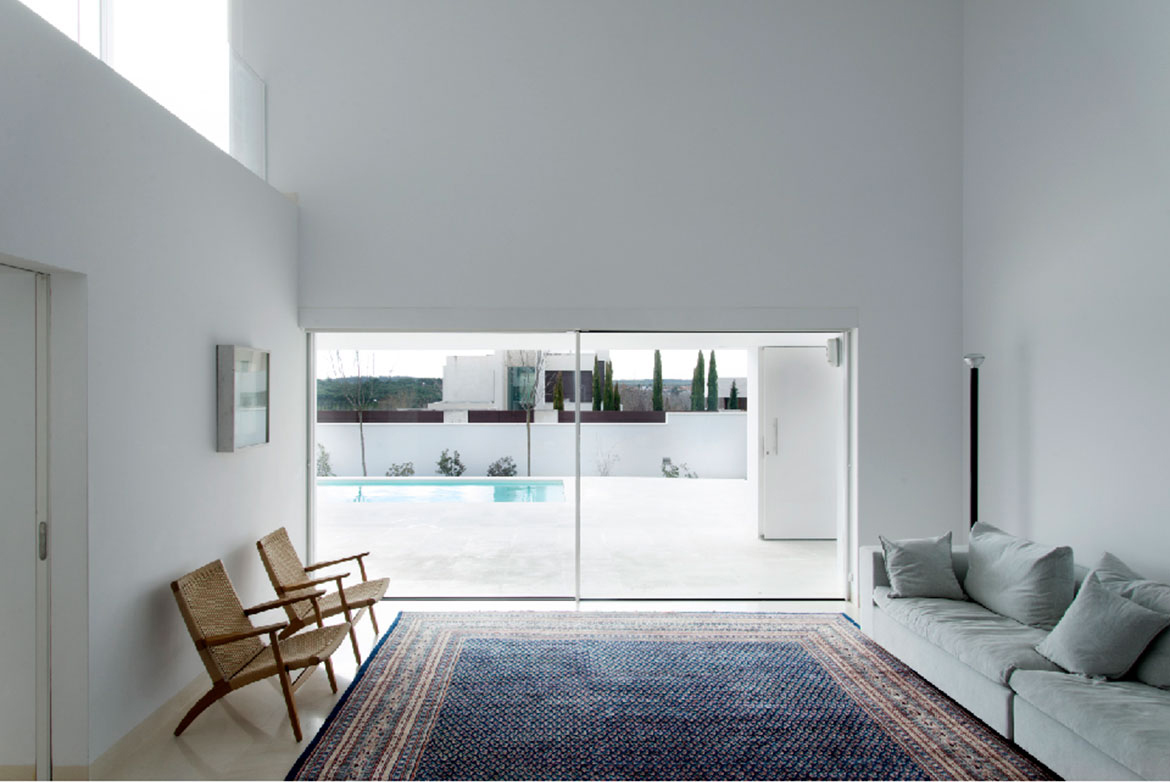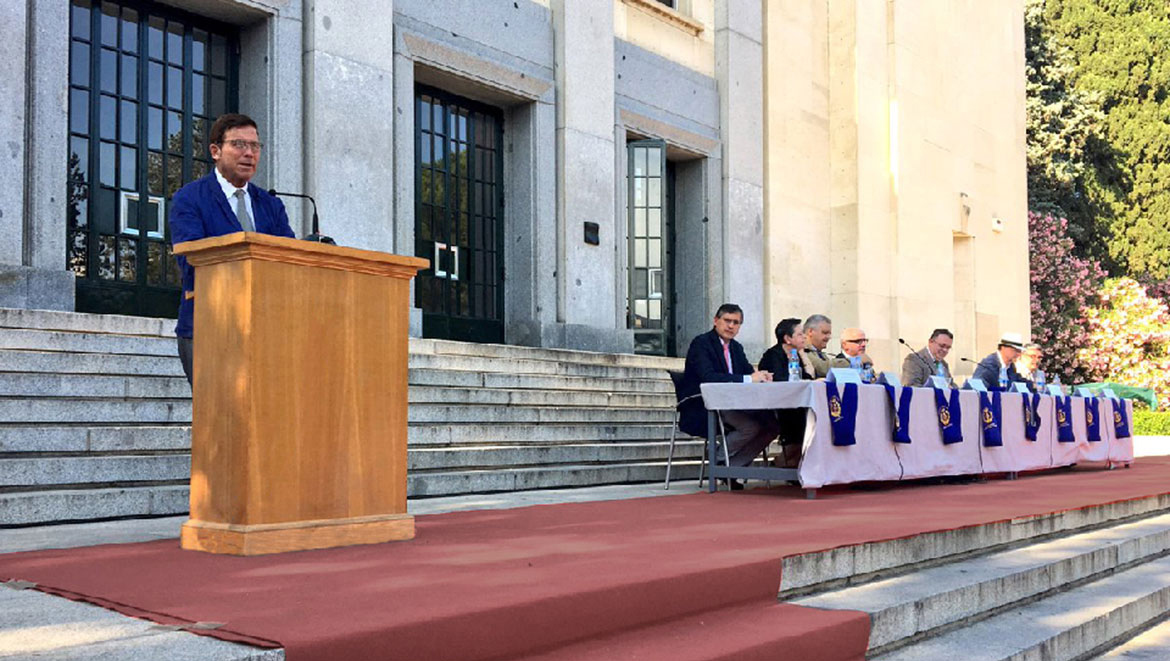
Alberto Campo Baeza (Valladolid, 1946) is Professor Emeritus of Projects at the School of Architecture of Madrid, ETSAM, where he has been a professor for over 35 years. He has also taught at numerous international centres such as the ETH in Zurich and the EPFL in Lausanne as well as the University of Pennsylvania in Philadelphia, the Kansas State University, the CUA University in Washington, and more recently, in 2016, L’Ecole d’Architecture in Tournai, Belgium. With the start of the new school year, as professor emeritus, he will transfer his knowledge to the students of the Master in Advanced Architectural Projects at ETSAM. He has been a Full Member of the Royal Academy of Fine Arts of San Fernando and a RIBA International Fellowship of the Royal Institute of British Architects since 2014.
The Sports Pavilion for the University Francisco de Vitoria or the Raumplan house are two of his most recent projects, which join a not very extensive list that includes, among others, Houses Turégano and de Blas, both in Madrid; the Gaspar, Asencio, and Guerrero House, and House of the Infinite in Cádiz; the Caja de Granada Savings Bank and the MA (Museum of Memory of Andalucía) both in Granada; the Moliner House in Zaragoza; Rufo House in Toledo, the Olnick Spanu House in New York or the Nursery for Benetton in Venice.
He has received significant recognition like the Torroja Award for his Caja Granada or the Award of the UPM University for his Excellence in Teaching. In 2013 he was awarded the Heinrich Tessenow Gold Medal, the Arnold W. Brunner Memorial Prize of the American Academy of Arts and Letters, the International Award Architecture in Stone in Verona, the BigMat 2015 in Berlin and the International Prize of Spanish Architecture.
Campo Baeza's projects have starred in numerous exhibitions around the world and his vision of architecture has been reflected in various books and written works such as The Built Idea - of which more than 30 editions have already been published -, I want to be an architect, Thinking with hands, Principia Architectonica, Poetica Architectonica, and Varia Architectonica.
Alberto Campo Baeza says that although he was born in Valladolid, he came to light in Cádiz, where he moved with his parents at just two years old. And it is this light, which is the indisputable protagonist of all his work and also in this architecture dialogue with CORTIZO ARCH.
"BEING AN ARCHITECT IS THE WORLD'S MOST BEAUTIFUL DUTY"
"For those who dream and then want to build those dreams" is the first sentence that we read when we open I want to be an architect , the book you wrote aimed at future architecture students. In it, you claim this profession as a source of happiness, an opportunity to dream and make people dream. In your case, have you succeeded?
I have repeated countless times something that I am convinced of: being an architect is the world's most beautiful duty. For me, repeating his words is a source of happiness, an opportunity to dream and to make others dream, to be happy and to make others happy.
However, I suppose that during the harshest years of the crisis -especially trenchant towards architects- it would not have been easy to make these students see that happiness and architecture could be found in the same sentence...
Of course, the crisis years were especially hard with younger architects. But crises are periodic. It took me a few years to do my first construction.
In any case, what there should be, with or without crisis, is a certain division of labor. It cannot be that a doctor, sorry, an architect, sees a thousand patients a day. Because there are architects who do it. The distribution of work, wisely and neatly organized, should be one of the main tasks of the Colleges of Architecture and the Superior Council of Colleges of Architects. If not, what are they for?
You present the architect as a multidisciplinary person, a combination of dreamer, artist and technician; of doctor, cook and poet. In what proportion should each ingredient be to get the perfect cocktail?
Like the cocktails you cite, there are countless ways to approach the profession. Two magnificent film directors came out of my grade at ETSAM: Fernando Colomo and Juan Sebastián Bollaín. The orderly and well-formed head of an architect has the ability to sort out many things in the world.
Let's continue talking about recipes and perfection, applied to architecture, to the built idea as you define it. What ingredients is a good project cooked with?
I speak, logically, of the Gravity that builds space and of the Light that builds time. And the need for a central idea in each project. But much better than I Vitrubio proposes with his Utilitas, Firmitas and Venustas. And the precise distinction T.S. Eliot makes between information, knowledge and wisdom can also help us. An architect has to be wise. Wisdom, like beauty, is not reserved just for a few.

It is clear is that it would be impossible to conceive your projects without the absolute protagonism of light. Why do you consider it a material?
It is not about me considering light as an important ingredient for architecture; it is. The most luxurious material with which architects work, which to top it off is given to us free of charge.
White is another key element in your architecture. Can you imagine projecting a building with rich colors and extravagant shapes?
Extravagances and colors, which can be good for dresses or for paintings, do not usually sit well with architecture. Architecture is something more serious, but not boring. The architecture that has been worthwhile throughout history, has never been extravagant. It has always been logical. Follies are that, silliness, but not architecture. This, which is very clear, seems to not be understood by our current society. And as soon as some bizarre, extravagant, crooked, inclined, wrinkled and colorful building appears, society thinks that this is the new architecture. I think about how a German city has gone bankrupt with its latest public building that has cost twenty times, or more, than expected. But it does have it all. Or a stupendous American university in New York that has also gone bankrupt after lifting its hectic, flamboyant building. It seems immoral to me.

The sleep of reason produces monsters is a painting by Goya from which you took the title to refer to that type of architecture of impossible shapes which you have been very critical of. But who do you consider more responsible? The one who designs it or to those who designate him?
The architect is the first responsible, and after, or at the same time, is the society that demands these follies. I know more than one architect who in those cases has said no. Honesty still remains a value.
De la Sota, Oíza, Fisac, Cano Lasso, Coderch and Carvajal are, for your part, the masters of contemporary Spanish architecture. How have they influenced your work?
The architects you have cited are true masters of architecture and life. They are not only first-rate architects but they are wise. And of absolute honesty. I was lucky to meet all of them. They were exceptional at all levels. I still think that justice has not been done to them, because in any other country they would have much greater public recognition. Of course I would like to be like them.

Let's delve into your projects, in some of which CORTIZO has collaborated. The Rufo House, for example. This construction is located on top of a hill and, using its location, it becomes a landscape house. How is that perfect symbiosis between housing and environment achieved?
The relationship between architecture and nature must be clear. In this case, the house was located on top of a hill with a very beautiful distant horizon landscape. We decided to place the most public area of the house as a high rise viewpoint, to enjoy those views.
The carpentry, as in many of my other constructions, were CORTIZO.
For its part, Cala House accomplishes its projection to the outside through large windows with minimal visible section and a spectacular play of light and spaces. A priori, there seems to be a lot of Turégano house in it, is that so?
The two houses you cite, Turégano House and Cala House, have quite a few things in common, such as that the most interesting views appear as you ascend. And certain internal spatial operations such as achieving diagonal spaces by adding double height spaces conveniently displaced vertically.
The owners of both houses are highly educated people who not only value those spatial qualities but are happy living in those spaces. They say it and they appreciate it.

In this new academic year you will be professor emeritus at ETSAM, in the Master in Advanced Architectural Projects. Therefore, continuing your association to teaching and ETSAM, although in a different way. How do you face this new phase? What do you make of all these years?
These forty years of teaching have been more than positive. I can only thank God for everything, for so much. And to so many people, both my students and my teachers. Great people, better than me, from whom I have learned more than I have been able to teach them. They have helped me and they have put up with me.
More than facing a new phase, I feel like I'm starting to start. And there is an old adventure of moving that Master Course to New York, which may come true next year.
Many generations have passed through your classes. How do you see the architects of tomorrow?
All the students who have passed through my classes have been a true gift for me, and they are people of enormous professional and human quality. I will never tire of insisting that you learn more than you teach.
The architects of tomorrow, those of today, those who are youngest, are extraordinary people. Knowing that this point in time is hard, they work harder. The youngest people studying at our School, ETSAM (Kenneth Frampton says that it is the best School of Architecture in the world) are very well prepared.
If I had a son, I would encourage him to do architecture, knowing that would make him very happy.
